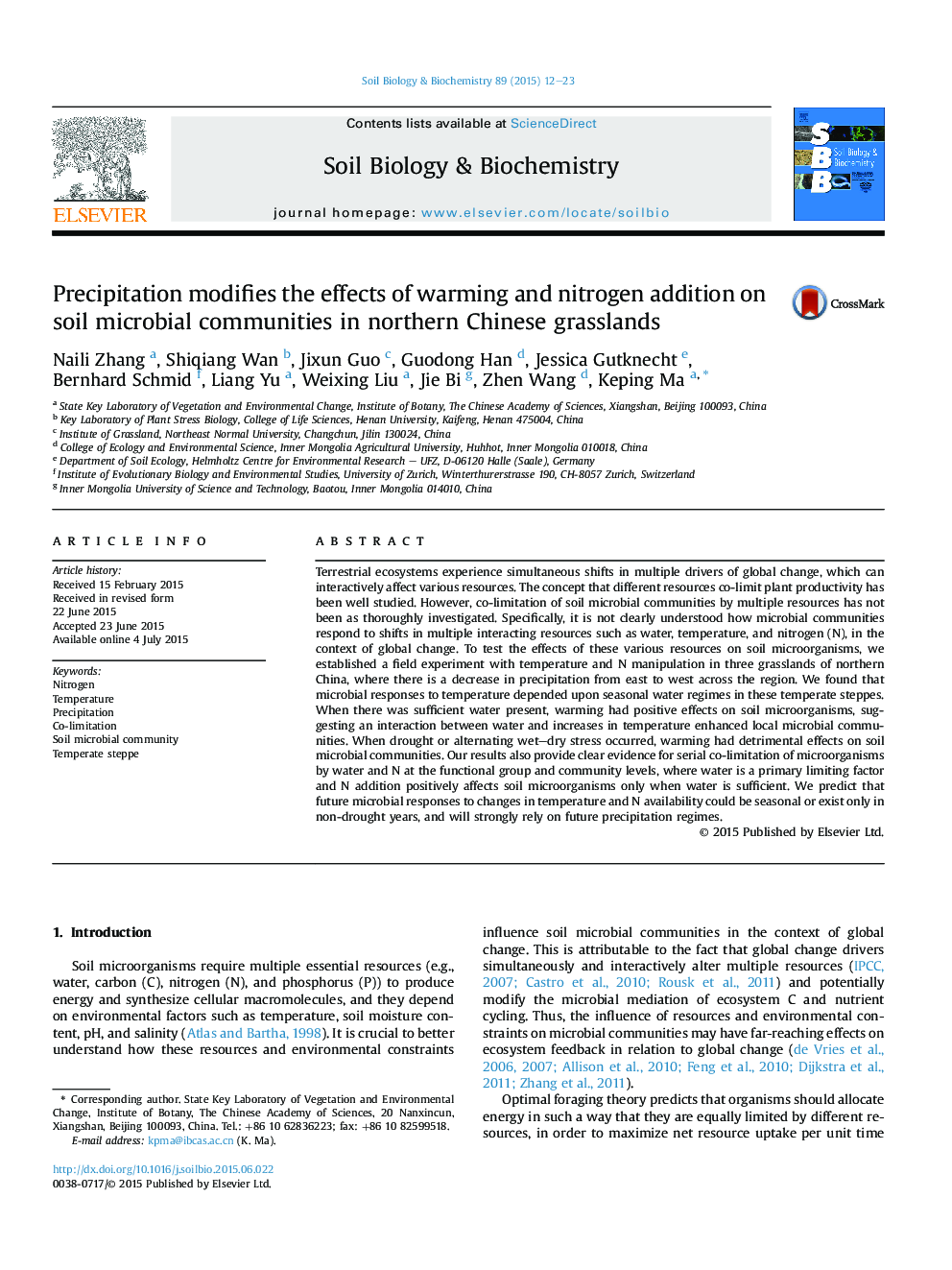| کد مقاله | کد نشریه | سال انتشار | مقاله انگلیسی | نسخه تمام متن |
|---|---|---|---|---|
| 2024450 | 1542595 | 2015 | 12 صفحه PDF | دانلود رایگان |
• Warming effects on soil microorganisms were modified by precipitation.
• Effects of N addition on soil microorganisms depended upon water regimes.
• Co-limitation of microorganisms by water and N happens at functional group and community level.
Terrestrial ecosystems experience simultaneous shifts in multiple drivers of global change, which can interactively affect various resources. The concept that different resources co-limit plant productivity has been well studied. However, co-limitation of soil microbial communities by multiple resources has not been as thoroughly investigated. Specifically, it is not clearly understood how microbial communities respond to shifts in multiple interacting resources such as water, temperature, and nitrogen (N), in the context of global change. To test the effects of these various resources on soil microorganisms, we established a field experiment with temperature and N manipulation in three grasslands of northern China, where there is a decrease in precipitation from east to west across the region. We found that microbial responses to temperature depended upon seasonal water regimes in these temperate steppes. When there was sufficient water present, warming had positive effects on soil microorganisms, suggesting an interaction between water and increases in temperature enhanced local microbial communities. When drought or alternating wet–dry stress occurred, warming had detrimental effects on soil microbial communities. Our results also provide clear evidence for serial co-limitation of microorganisms by water and N at the functional group and community levels, where water is a primary limiting factor and N addition positively affects soil microorganisms only when water is sufficient. We predict that future microbial responses to changes in temperature and N availability could be seasonal or exist only in non-drought years, and will strongly rely on future precipitation regimes.
Journal: Soil Biology and Biochemistry - Volume 89, October 2015, Pages 12–23
